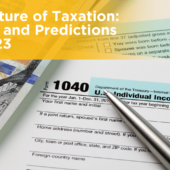Tax season is an opportunity to not only fulfill your civic duty but also to maximize your savings. In 2023, the tax landscape offers numerous tax breaks and credits that can significantly reduce your tax liability. This blog aims to provide readers with a comprehensive overview of available tax breaks and credits for the year, along with strategies to optimize their tax savings.
1. Earned Income Tax Credit (EITC):
The Earned Income Tax Credit is a valuable credit for low to moderate-income individuals and families. To make the most of this credit:
- Learn about EITC eligibility criteria, which can vary based on income, filing status, and the number of qualifying children.
- Consider the impact of any changes in your income or family situation on EITC eligibility.
- Maximize your credit by filing a complete and accurate tax return.
2. Child Tax Credit:
The Child Tax Credit can provide substantial savings for families with dependent children:
- Understand the rules for claiming the Child Tax Credit, including age, relationship, and residency requirements.
- Be aware of changes to the Child Tax Credit, such as increased credit amounts for 2023.
- Explore strategies to optimize your credit, such as utilizing advanced payments if eligible.
3. Retirement Savings Contributions:
Contributing to retirement accounts can lead to tax savings:
- Review contribution limits for IRAs and 401(k)s and make contributions to maximize your savings.
- Understand the benefits of contributing to tax-advantaged retirement accounts and how it can reduce your taxable income.
4. Education-Related Credits:
If you’re pursuing higher education or supporting a student, education-related credits can be valuable:
- Explore the American Opportunity Credit and Lifetime Learning Credit for education expenses.
- Keep track of education-related expenses and ensure they meet IRS requirements for these credits.
5. Small Business Tax Deductions:
Small business owners have access to several deductions that can reduce their taxable income:
- Familiarize yourself with small business deductions, such as the Section 179 deduction for equipment purchases.
- Keep detailed records of business expenses to maximize deductions.
6. Energy Efficiency Tax Credits:
Energy-efficient home improvements can lead to tax credits:
- Research energy-efficient improvements that qualify for tax credits, such as solar panels or energy-efficient windows.
- Keep receipts and documentation to claim these credits.
7. Charitable Donations Deductions:
Donating to charitable organizations can reduce your taxable income:
- Keep records of charitable donations, including receipts and acknowledgment letters.
- Understand the deduction rules for charitable contributions and ensure compliance with IRS guidelines.
8. Medical Expense Deductions:
Medical expenses can be deductible under certain circumstances:
- Keep records of medical expenses, including receipts and medical bills.
- Be aware of the threshold for deductible medical expenses and consider strategies for optimizing this deduction.
Conclusion: Your Tax Savings Roadmap
Maximizing your tax savings in 2023 requires awareness, planning, and meticulous record-keeping. The tax breaks and credits mentioned above are valuable tools to reduce your tax liability, but to fully benefit from them, it’s essential to understand their eligibility criteria and compliance requirements.
Consulting with Clear Tax Filer can provide you with personalized guidance and ensure that you’re making the most of the available tax breaks and credits. By following a well-informed tax strategy, you can take full advantage of these opportunities to save money and secure your financial future.





